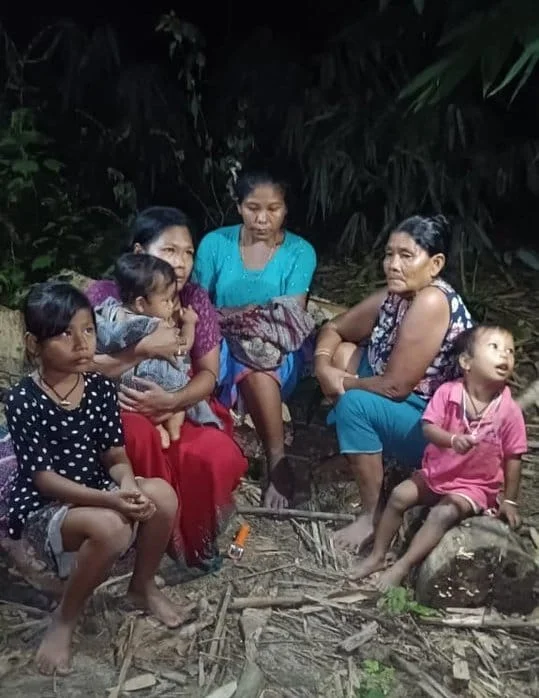Synergised Efforts Stabilise Manipur: Army Chief Highlights Progress in Northeast
In a recent address, Army Chief General Upendra Dwivedi emphasized that coordinated actions between security forces and proactive government initiatives have significantly stabilized Manipur. He noted that while sporadic incidents of violence persist, the overall situation in the Northeast is gradually improving. General Dwivedi also highlighted the importance of community outreach and enhanced surveillance along the Indo-Myanmar border to maintain peace and security in the region.
A Deep Dive into Manipur’s Path to Stability and Northeast India’s Progress
Introduction
Manipur, a picturesque state in Northeast India, has long been marred by insurgency and unrest. However, recent developments suggest a positive shift towards stability and peace. Army Chief General Upendra Dwivedi’s recent statements shed light on the collaborative efforts that have contributed to this transformation.
Understanding Manipur’s Historical Context
To appreciate the significance of the current progress, it’s essential to understand Manipur’s historical backdrop. The state has been a melting pot of diverse cultures, ethnicities, and traditions. However, post-independence, it faced challenges like insurgency, ethnic conflicts, and demands for autonomy, which hindered its development.
The Role of Security Forces in Stabilizing Manipur
The Indian Army, along with paramilitary forces, has played a pivotal role in restoring peace in Manipur. Through strategic operations, intelligence sharing, and community engagement, they have managed to curb insurgent activities. General Dwivedi highlighted that these synergised efforts have been instrumental in stabilizing the region.
Government Initiatives Driving Progress
Beyond military interventions, the government’s proactive initiatives have been crucial. Development projects focusing on infrastructure, education, and healthcare have addressed some of the root causes of unrest. By improving the quality of life and providing opportunities, the government has reduced the appeal of insurgent ideologies among the youth.
Community Outreach and Its Impact
Engaging with local communities has been a cornerstone of the peace-building process. Non-Governmental Organizations (NGOs), military veterans, and local leaders have collaborated to foster reconciliation and understanding among different ethnic groups. These efforts have paved the way for a more cohesive society, where dialogue replaces conflict.
Enhanced Surveillance Along the Indo-Myanmar Border
Manipur shares a porous border with Myanmar, making it susceptible to cross-border insurgency and illegal activities. Recognizing this, the Indian Army has bolstered surveillance and security measures along the border. General Dwivedi mentioned that these steps are crucial to insulating the region from external unrest and ensuring internal stability.
Disaster Preparedness: A Step Towards Comprehensive Security
In addition to addressing insurgency, the Indian Army has focused on disaster preparedness. An allocation of Rs 17 crore has been made to upgrade Quick Reaction Teams (QRTs) and Quick Reaction Medical Teams. This initiative aims to enhance the region’s capability to respond to natural disasters, ensuring the safety and well-being of its residents.
The Road Ahead: Sustaining Peace and Fostering Development
While significant progress has been made, sustaining peace in Manipur requires continuous effort. It’s imperative to maintain the momentum of development projects, ensure effective governance, and keep the channels of communication open with local communities. By doing so, Manipur can look forward to a future where stability and prosperity are the norms rather than exceptions.
Conclusion
The transformation of Manipur from a conflict-ridden state to one on the path of stability is a testament to the power of coordinated efforts. The synergy between security forces, government initiatives, and community engagement has created an environment conducive to peace and development. As General Dwivedi aptly highlighted, while challenges remain, the progress achieved thus far lays a strong foundation for a brighter future for Manipur and the broader Northeast region.
FAQs
- What were the main factors contributing to instability in Manipur?
- Manipur faced challenges like insurgency, ethnic conflicts, and demands for autonomy, which contributed to its instability.
- How have security forces contributed to Manipur’s stability?
- Through strategic operations, intelligence sharing, and community engagement, security forces have curbed insurgent activities, leading to increased stability.
- What role has the government played in Manipur’s progress?
- The government has initiated development projects focusing on infrastructure, education, and healthcare, addressing root causes of unrest and improving the quality of life.
- Why is surveillance along the Indo-Myanmar border important?
- Enhanced surveillance prevents cross-border insurgency and illegal activities, insulating the region from external unrest.
- What measures are being taken for disaster preparedness in Manipur?
- An allocation of Rs 17 crore has been made to upgrade Quick Reaction Teams and Quick Reaction Medical Teams, enhancing disaster response capabilities.


